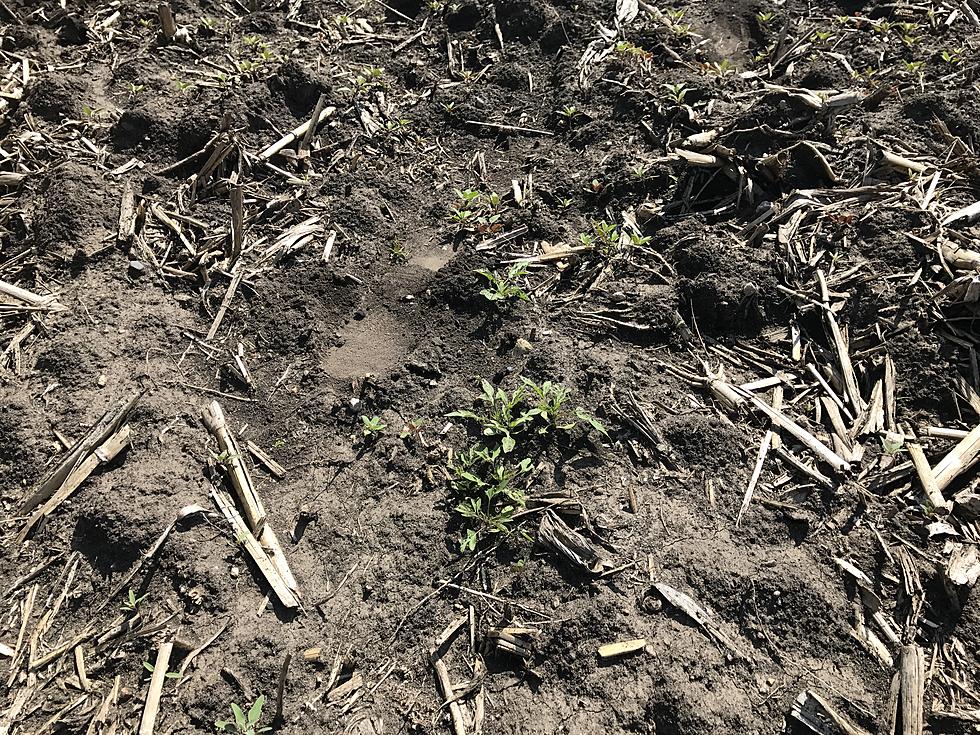Parents often lecture their teenagers that nothing good happens after midnight. If you took this logic to soybean weed management, it would be that nothing good happens after June when postemergence herbicides are applied.
That’s because the risk of crop injury, herbicide carryover, and environmental and food safety concerns (e.g., preharvest intervals) all increase in July, says Jeff Gunsolus, University of Minnesota (U of M) Extension weed specialist. He notes the U of M Extension educators Liz Stahl and Dave Nicolai recently published a Crop News article addressing growth stage cutoffs for herbicide applications in corn and soybean and how to determine growth stage and height. Gunsolus has published in cooperation with NDSU a chart listing crop rotation restrictions for many of the commonly used herbicides.
Gunsolus has also received several calls concerning potential carryover of fomesafen (Flexstar) on corn. “I don’t have an understanding of the extent or impact of the carryover situations, but it is likely a result of July applications in soybeans for common waterhemp control,” he says.
WHY FARMERS ARE UNDER THE GUN
In states like Minnesota, a combination of a long duration of wet weather and advanced growing degree days has created serious weed management challenges for many corn and soybean growers, says Gunsolus. Minnesota also has a restriction that farmers in several other states don’t have. June 20 — this Wednesday — is the cutoff date for approved dicamba formulations on Xtend soybean and weeds moving into their rapid growth phase.
Here are his responses to some of the questions he is receiving.
FIELDS WHERE NO PREEMERGENCE RESIDUAL HERBICIDE WAS APPLIED
Gunsolus says this often results in multiple weed species with a broad range of weed heights. In such situations, please realize that there are no perfect solutions.
Due to their early emergence period, common lambsquarters and common and giant ragweed control will be especially challenging. The good news is that working a field later in the growing season reduces the density of these weed species as their germination tapers off in late May to early June.
Prioritizing these fields is critical because if you wish to achieve the maximum weed control potential for any of the postemergence herbicides, you need to target weeds at a 4-inch height or less. Therefore, full labeled rates and plant coverage are critical as tall weeds can shelter smaller weeds, and contact herbicides such as Liberty, Flexstar, and Cobra need higher gallon-per-acre rates and finer spray droplets than you would consider when using glyphosate or dicamba.
LATE-TO-CANOPY FIELDS
Another challenge is keeping weeds under control in soybeans that are going to be late to canopy. This is particularly a challenge with common waterhemp. It’s a weed that thrives on heat and moisture, and it has an emergence period that extends well into July.
In this situation, a practice that has proven effective has been to apply a Group 15 herbicide such as Dual, Outlook, Warrant, or Zidua with either of the broad-spectrum herbicides, glyphosate or glufosinate that your seed technology allows. The article, Got waterhemp? Layer residual herbicides to maintain control describes this layering strategy in more detail. While the Group 15 herbicides will not control emerged weeds, they will provide residual weed control later into July and allow the soybean canopy to develop and shade out some of the emerging weeds.
To further complicate things, some fields have common waterhemp that is resistant to Glyphosate (Group 9); ALS inhibitors such as Pursuit, Classic, FirstRate (Group 2); PPO inhibitors such as Flexstar, Cobra, Cadet and Ultra Blazer (Group 14). Some plants have three-way resistance and some have two-way resistance. Using the Group 15 herbicides will help with the late flushes of weeds. Also, soybeans that have the LibertyLink trait are a good postemergence option as waterhemp biotypes have not yet developed resistance to the Liberty (Group 10) herbicide.
DICAMBA IS NOT A JULY RESCUE TREATMENT FOR SOYBEANS
Gunsolus has received many responses indicating that the new dicamba formulations with Xtend seed technology are critical to common waterhemp management. Research from many land grant universities indicates that dicamba is not a stand-alone herbicide and it does have activity on small weeds but it does not have effective residual soil activity, he says. The key strength of the Xtend technology is with the earlier emerging weeds, such as common lambsquarters and the ragweed species, says Gunsolus. Please note that even without the Minnesota June 20th cutoff date for dicamba application, this technology should NOT be perceived as a rescue treatment for use in July, says Gunsolus.
WEED MANAGEMENT IS MORE THAN HERBICIDES
Time to bring back the “C” word? Well, cultivation is an option for July weed management. Gunsolus says it removes weeds without setting back the canopy as some postemergence herbicides will do. Cultivation will lead to faster canopy closure and a more competitive environment for weeds.
It’s also an option for managing weed species identified as herbicide resistant – especially weeds resistant to multiple classes of herbicide. A zero threshold approach to begin reducing the weed seed bank is something to strongly consider investing the time, physical labor, and money into addressing this increasing problem.
Credit: agriculture.com












